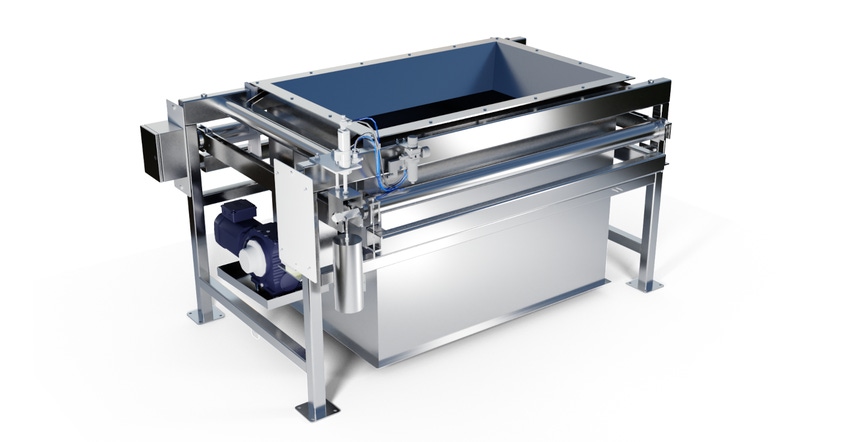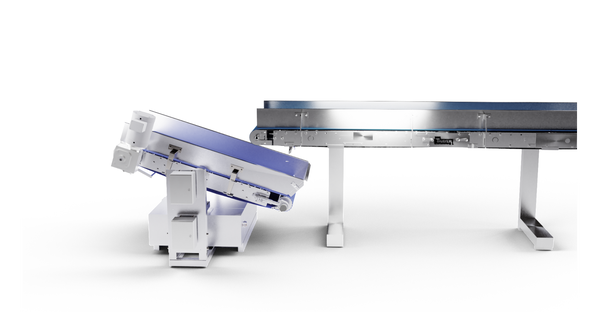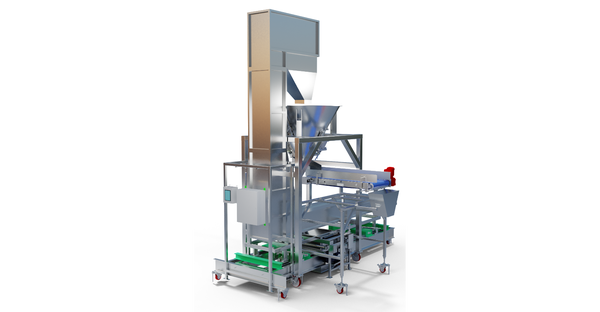Exploring creative approaches for incorporating weighing systems into existing process layouts
May 18, 2021

David Hyer, president, Thayer Scale
Many articles printed in Powder & Bulk Solids have effectively documented the benefits of utilizing weighing-based solutions to manage process quality. However, many low-volume, high-mix producers don’t see the need to add gravimetric feeders, weigh belts, or other continuous weighing systems to the original process layout until growth or new quality demands force them to consider adding automation and/or control capabilities. This leaves many producers facing a difficult decision: Sacrifice quality and continue to operate as is, or make a significant investment in a new, continuous process line, potentially creating undue financial risk for the business.
Fortunately, there are many ways to retrofit existing process lines to add rate control, inventory management, and process monitoring. This article will explore some creative approaches for incorporating weighing systems into existing process layouts. Before embarking on a retrofit, though, it is critical that suppliers first establish the objectives and key metrics before reviewing potential solutions.
Three categories of possible, but often overlooked, retrofit include:
1. One-for-one replacements of existing conveying apparatus with weighing-enabled alternatives
2. Introduction of low- or no-footprint weighing solutions that intercept product flow without altering existing process layouts
3. Use of custom-designed scale retrofits that mate to existing conveying equipment
Case Study: Replacing Process Elements with Weighing-Enabled Alternatives
As part of a corporate quality-improvement effort, a snack food supplier wanted to understand the raw weight of incoming potatoes in order to evaluate waste throughout the incoming material handling process. Unfortunately, the process was largely manual. A forklift brought wooden crates of potatoes to an inclined bucket elevator, where each crateful of potatoes was unloaded, rotated, and fed gently to the bucket elevator’s inlet. Once elevated, a belt immediately conveyed the potatoes into a drum washing system; potato slicing and other key operations followed. The supplier established three key metrics for evaluating the front end of the material handling process:
1. Total incoming material (by weight) per shift
2. Rate of incoming material by hour
3. Average weight per crate delivered
The supplier further determined that accuracy of +/-2% would be sufficient to meet its quality targets. With metrics and objectives established, the supplier and Thayer collaborated to generate and evaluate process alternatives. While a vehicle weighing scale to weigh the forklift truck together with the crate of potatoes was considered, a quick calculation of the expected accuracy determined the option unviable. A weighed, rotating bucket, however, presented a compelling alternative. After conducting an evaluation at the supplier’s facility, Thayer Scale designed and procured a unit that precisely matched the existing process flow (in terms of dimensions and throughput; see Figure 1.) The unit, with straightforward controls, provided the totalized weight for each drum of material. It delivered critical data, including totalized weight, number of bucket dumps, and timestamp data to the central distributed control system (DCS). The supplier calculated and reported key metrics from this critical data; its overall quality rose as a result.
Finding Room for Space-Friendly Flow Meters, Feeders, and Insertion Weighers
Flow Meters and Feeders
Even when a production line appears dense, it offers plenty of options for installing mass flow meters or feeders specifically designed to intercept product in situ.
Flow meters are generally classified as either non-contact measurement technologies or contact measurement technologies designed to sense a material’s physical energy. Non-contact, bulk flow measurement technologies (e.g., microwave or capacitive techniques) can be used to calculate the flow rate of material in pneumatically fed or gravity-flow enclosed structures; they measure particle flow velocity and material density to calculate mass flow. The installation process is fairly straightforward and limits modifications to existing feed structures. It is important to note, though, that calibration must be performed whenever material properties change because the process is highly dependent upon material consistency. Accuracy, under good conditions, is typically around 5%.
Impact meters and other types of angular measurement techniques rely on a deviation in the flow of material to register a mass flow on a sensor. A wide range of impact flow meters, utilizing a number of different measurement techniques—most commonly centripetal force and deflection due to impact—is available. The systems, designed to intercept material as it flows through an existing process, can be incorporated without significant changes to the process layout. Variations in material density and pile height affect accuracy, which typically ranges from 2–5% (although some suppliers claim accuracy as high as 0.25%).

Figure 2: Insertion weigher
Insertion Weighers
Standard weigh belt feeders typically require at least 6-8 ft of floor space to accommodate a weighbridge that is long enough to measure material accurately. Belt feeders also typically require a flexible belt carcass that operates at a low tension in order to accurately sense material. A special class of belt feeders--often called insertion weighers--overcomes the constraints of standard feeders by supporting the entire belt structure (side plates, entire conveyor assembly, motors, drive components, belt cleaner, take-up assembly) on a mass-counterbalanced scale (see Figure 2.) This design enables a truncated belt feeder, one that is just 2-3 ft long. The entire conveyor acts as a weighbridge, allowing for a much wider range of belt compounds. The belting can be stiff, operate under tension, and employ positive-drive solutions. Additionally, these belt feeders can be inclined or declined to match the height of an existing process layout. A belt or vibratory conveyor is the ideal way to transport material to an insertion weigher because these methods minimize the negative impact of material dropping onto the conveyor. Properly installed insertion weighers can provide an accuracy of 0.25–1%.
Retrofitting Existing Material Handling Equipment
Adding Weight Measurement or Rate Control
It is often possible to retrofit existing hoppers, silos, and conveying equipment with tools that measure weight and flow rate.
Load cells and level probes can be added to existing hoppers and silos that serve as temporary storage containers or actively fed discharge devices. Weigh modules using single-end beam, double-end beam, compression canister, or s-beam load cells are available. Special care must be given to ensure load is transferred precisely to the load cell with a minimum of off-center or eccentric loading effects; it is important to stabilize the hopper so that errors or thermal events do not interfere with even, direct loading of the weigh module. Several great online resources—such as the “Load Cell and Weigh Module Handbook” by Rice Lake Weighing Systems—explore retrofitting in more breadth and depth.
Hoppers and silos that employ fixed support structures and piping are poor candidates for weigh module additions. These hoppers and silos, however, can benefit from a specific class of bolt-on load sensors that measure strain in existing support structures (e.g., legs, hanging support arms). The sensors bolt directly to existing legs and measure, with 3–5% accuracy, the weight-induced strain on large storage vessels. A bolt-on load sensor can be an effective, low-cost option when it is not possible to move or modify an existing structure. It can be installed in a loaded silo, saving the time and expense required to empty the vessel completely.

Figure 3: Low-profile scale integrated to a bucket elevator
Incorporating a Low-Profile Scale
A fully mass-counterbalanced, low-profile scale can seamlessly integrate with existing conveying equipment, including bucket elevators, slat conveyors, and cleated belt conveyors (see Figure 3.) By completely mass-counterbalancing the tare weight, the equipment precisely measures the total net weight residing in the scale at any point in time. When combined with a speed measurement device the equipment can determine flow rate, totalization of material conveyed, and other process metrics. Instrumentation—which is easily configurable—reports key metrics, such as buckets per minute and net weight per bucket. Standard designs are available for a variety of conveying systems.
Conclusion
Many manufacturers believe that the only way to upgrade existing process capability is with an expensive line replacement. There are, however, many ways to convert and upgrade existing equipment while maintaining an existing process flow and retaining most, or all, of existing processing equipment.
David Hyer is president, Thayer Scale (Pembroke, MA). For more information on how to add precise weighing capability to existing, unique manufacturing lines, call 781-826-8101 or visit www.thayerscale.com.
You May Also Like


